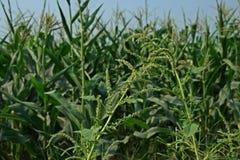The leaves, stems and seeds of Palmer amaranth, like those of other amaranths, are edible and highly nutritious.[1][2] Palmer amaranth was once widely cultivated and eaten by Native Americans across North America, both for its abundant seeds and as a cooked or dried green vegetable.[2] Other related Amaranthus species have been grown as crops for their greens and seeds for thousands of years in Mexico, South America, the Caribbean, Africa, India, and China. The plant can be toxic to livestock animals due to the presence of nitrates in the leaves.[3] Palmer amaranth has a tendency to absorb excess soil nitrogen, and if grown in overly fertilized soils, it can contain excessive levels of nitrates, even for humans. Like spinach and many other leafy greens, amaranth leaves also contain oxalic acid, which can be harmful to individuals with kidney problems if consumed in excess,.[4]
CATEGORIES
EXCLUSIVE
Sharing is not just caring, it's also about giving credit - add this image to your page and give credit to the talented photographer who captured it.:
KEYWORDS
amaranth autumn background barrel beautiful beauty bloom blooming blossom botany bouquet branch burdock close closeup clover color dead detail end floral flower flowers fresh from garden green growing health healthy herb herba leaf lili lilli lilly lily lora macro malva medical medicine natural nature petal pigweed pink plant prickle rose spring succulent succulents summer the thorn white wooden


















































